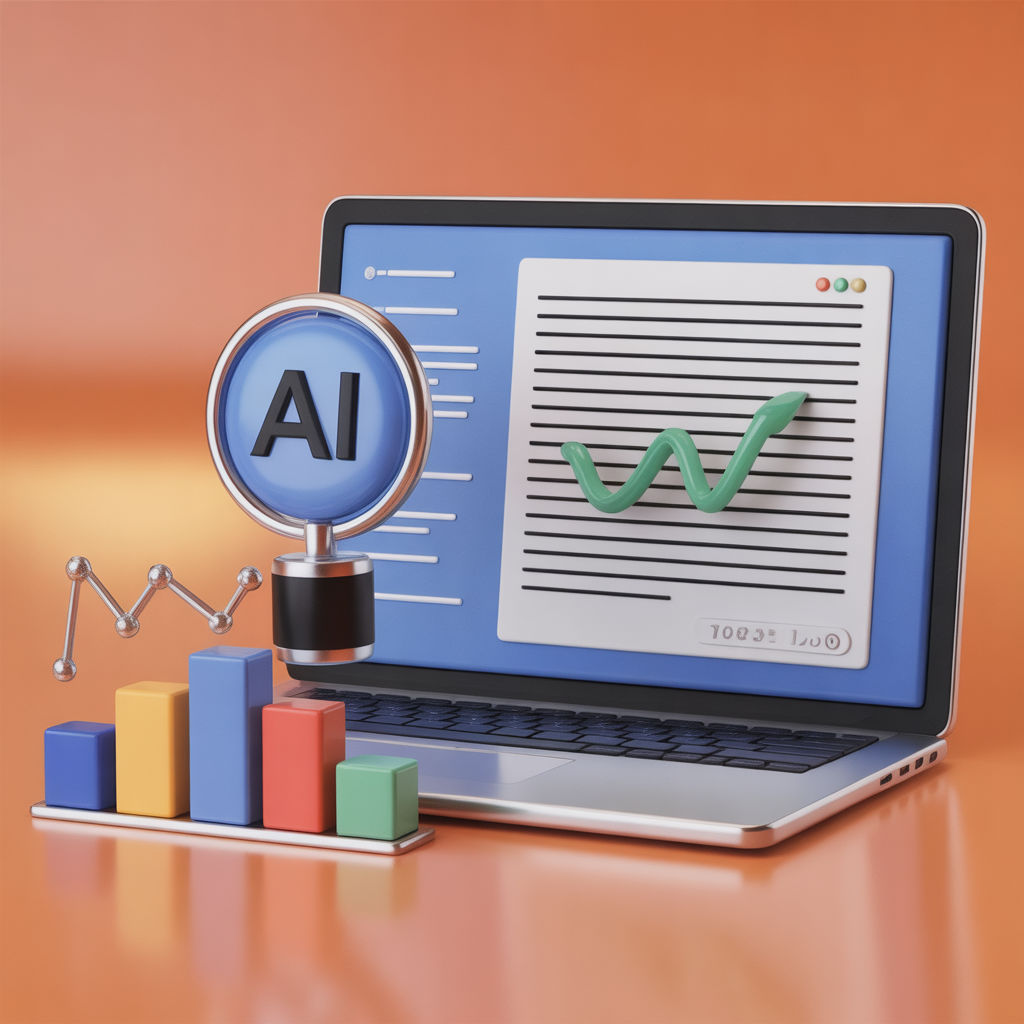🌍 Introduction: The Rise of Automated Content Systems
The digital world moves fast — and content creation has become a race against time.
Every business wants consistent, SEO-optimized blogs and social posts, but traditional methods are too slow.
That’s where AI-driven content workflows come in.
In 2025, smart businesses are using AI tools to plan, write, optimize, and publish content automatically — all while keeping their unique brand voice intact.
In this blog, you’ll learn exactly how to build your own AI content creation system — step by step.
🚀 Step 1: AI-Powered Idea Generation
Every great piece of content starts with a great idea — and AI can now handle that too.
💡 Tools to Use:
- ChatGPT / GPT-5: For creative topic ideas and outlines
- AnswerThePublic: To find trending questions people ask online
- Frase.io: To analyze SERP data and suggest high-ranking topics
⚙️ How It Works:
- Enter your niche keyword (e.g., “AI in marketing”)
- The AI scans Google, Quora, and Reddit for related questions
- It suggests blog titles, subtopics, and focus keywords
Example:
Prompt to ChatGPT —
“Generate 10 SEO-friendly blog ideas about AI content marketing targeting digital agencies.”
AI will return keyword-rich ideas ready for your content calendar.
🧩 Step 2: Research & Keyword Planning
Keyword research is the backbone of SEO. AI tools now make it data-driven and automatic.
🔧 Tools:
- SurferSEO / NeuronWriter: For SERP keyword analysis
- Ahrefs / Semrush AI Assistant: For keyword intent and competition
- Scalenut: For topic clustering and keyword grouping
🧠 Pro Workflow:
- Choose a main topic (e.g., “AI blog writing”)
- Run it through your SEO tool
- Export suggested primary and secondary keywords
- Feed them to ChatGPT or Jasper before writing
This ensures your blog ranks for multiple related queries — not just one.
✍️ Step 3: AI Blog Writing & Draft Creation
Once you have your keywords and topic ready, it’s time to let AI write your first draft.
🛠️ Tools:
- ChatGPT (GPT-5): For creative, natural long-form writing
- Jasper AI / Writesonic: For structured and marketing-focused content
- KoalaWriter: For quick blog drafts with SEO meta support
⚙️ Workflow:
- Use a prompt like: “Write a 1200-word SEO blog on ‘AI workflow automation’ using keywords: AI content tools, automation, GPT-5.”
- Review the output and fine-tune tone and structure
- Run it through Grammarly or QuillBot for grammar and style polishing
💡 Tip: You can train Jasper or ChatGPT with your brand tone to maintain consistency across all posts.
🔍 Step 4: AI SEO Optimization
Now your blog needs to be optimized to rank high on Google.
⚙️ Tools:
- SurferSEO – Analyzes top-ranking pages and gives content score
- NeuronWriter – Suggests keyword density and missing terms
- Frase.io – Adds FAQs and featured snippet optimization
🧩 How to Automate:
- Paste your AI-generated blog into SurferSEO
- Follow on-screen recommendations for headings, keywords, and internal links
- Re-run it through Frase.io for snippet-ready questions
The result: an SEO-optimized, reader-friendly blog ready to publish.
🎨 Step 5: Add Visuals and Media with AI
Visuals increase engagement — and now AI can design them too.
🖼️ Tools:
- Canva Magic Studio – Generates custom blog banners
- Midjourney / Leonardo.ai – Creates AI-based illustrations
- Pexels / Unsplash APIs – Auto-inserts royalty-free images
⚙️ Workflow:
Use ChatGPT or Canva to generate image prompts like:
“Create a minimalist blog banner about AI content automation, using futuristic design.”
Then upload visuals directly into your CMS.
You can even automate image insertion via WordPress plugins (e.g., Auto Featured Image AI).
⚙️ Step 6: Auto-Publishing on WordPress or CMS
Once your content is written and optimized, publishing can also be automated.
🧰 Tools:
- WordPress + Jetpack AI Assistant
- Zapier or Make.com (Integromat) for automation
- Buffer / Hootsuite for auto-sharing on social media
🔄 How It Works:
- Connect your content folder (Google Docs or Notion) to WordPress via Zapier
- When a new document is ready → it auto-uploads as a draft
- Add SEO tags and schedule publish date automatically
Your blog posts can literally go live while you sleep 😎
📊 Step 7: AI Analytics & Performance Tracking
Once content is published, AI analytics tools help you track engagement, ranking, and conversions.
📈 Tools:
- Google Analytics 4 + AI Insights
- SurferSEO Content Audit Tool
- Notion AI Dashboard / Airtable Automations
You’ll receive AI-driven suggestions like:
- “Add more FAQs to improve time on page”
- “Include target keyword in H2 for better ranking”
- “Optimize for voice search queries related to your topic”
These help you continuously improve performance without manual monitoring.
🤖 Step 8: Continuous Improvement & Repurposing
Smart creators repurpose their content using AI.
💡 Tools:
- ChatGPT / Jasper → Convert blogs into email newsletters or LinkedIn posts
- Synthesia / HeyGen → Turn text into AI video summaries
- Descript AI → Convert podcasts or audio into written summaries
You can turn 1 blog post into 5 new content formats — saving time and maximizing reach.
💼 Bonus: Example of a Complete AI Content Workflow
Here’s a simple system you can copy:
| Stage | Tool | Output |
|---|---|---|
| Topic Ideas | ChatGPT + Frase | 10 SEO blog topics |
| Keyword Research | SurferSEO | Focus keywords |
| Writing | Jasper AI | Draft blog |
| SEO Optimization | NeuronWriter | Optimized copy |
| Visuals | Canva AI | 3 banners |
| Publishing | Zapier + WordPress | Auto-publish |
| Analytics | GA4 + Surfer | Performance report |
This setup can produce 4–6 fully optimized blogs per week with minimal human intervention.
🧭 Conclusion: The Human + AI Partnership
AI workflows don’t replace creativity — they enhance it.
Think of AI as your virtual content team: one that never sleeps, misses deadlines, or forgets SEO rules.
But the magic still lies in human insight — the ability to connect emotionally with readers.
The best results come from a balance between automation and creativity.
“Let AI handle the repetitive work, and let humans handle the meaningful stories.”
In 2025 and beyond, this balance will define the brands that stand out online.

